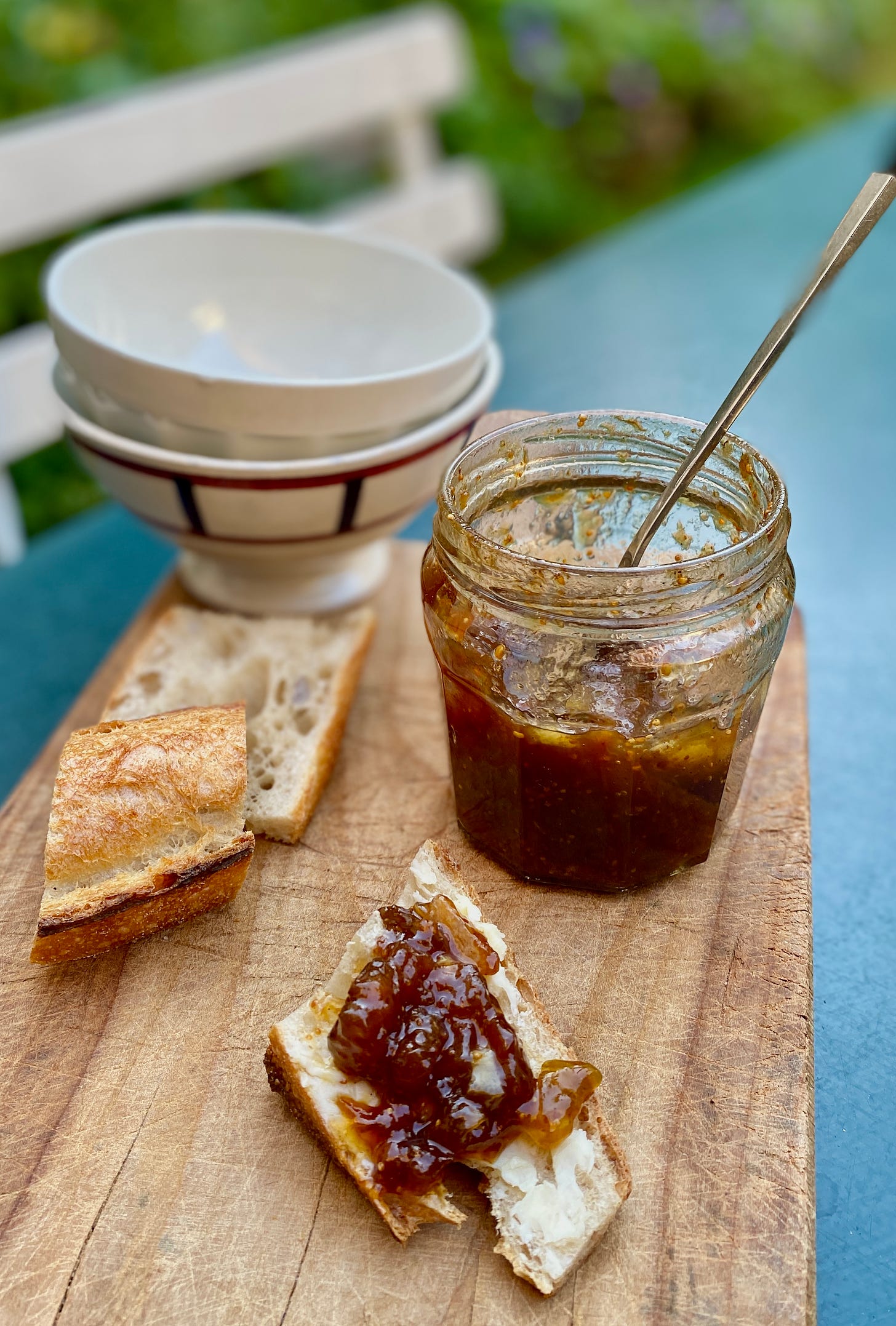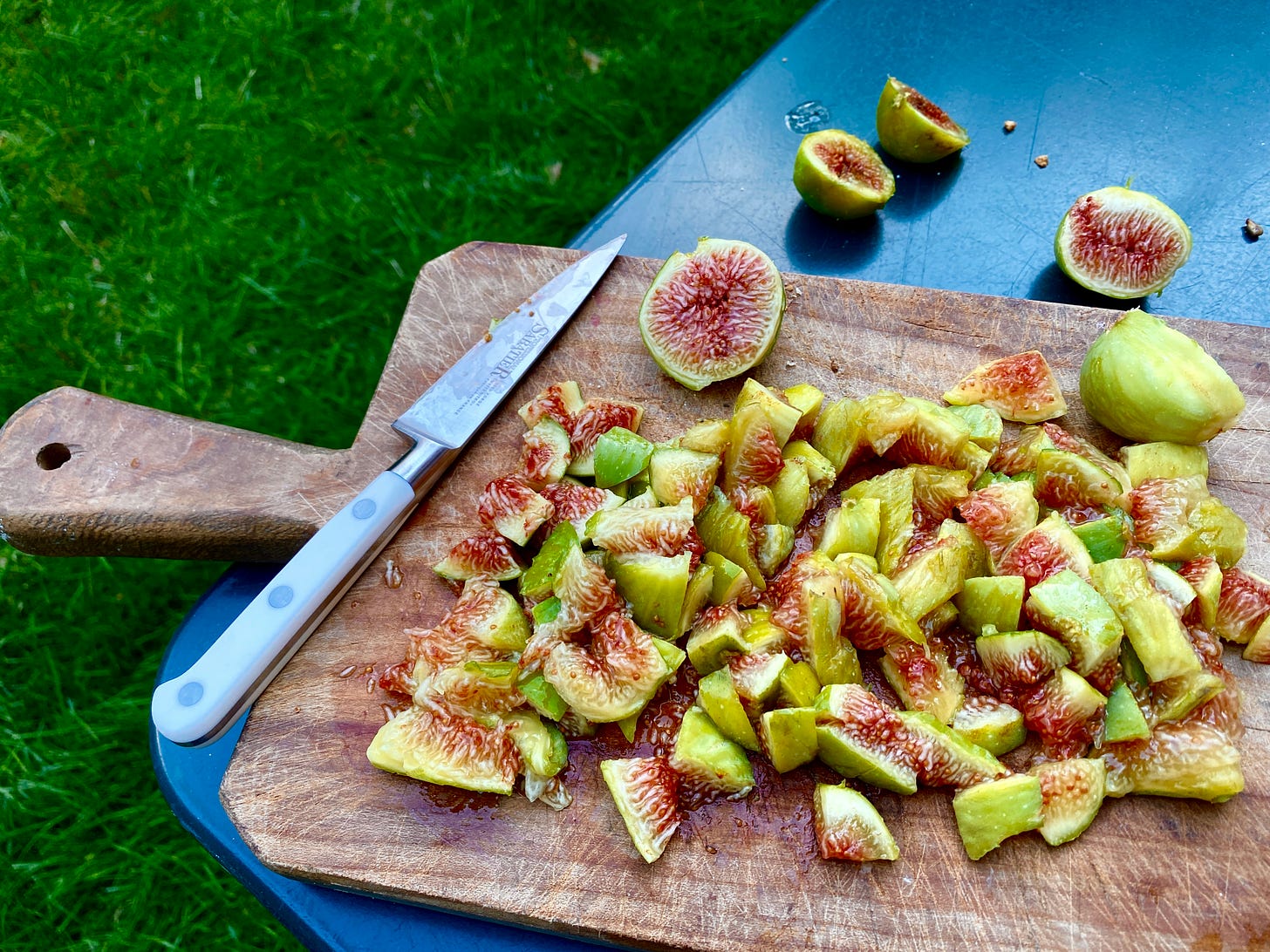There’s a phrase in Judy Rodger’s exemplary cookbook, The Zuni Café Cookbook, along the lines of, “If there’s a harder way to do something, that’s the way we do it.” (I’m still unpacking my cookbooks after a recent move, but I remember that line because that pretty much describes Judy.) I am an avid jam-maker and can’t resist using fruit in season, especially when it’s bountiful and cheap. Even better, when it’s free, I’m all in…
Our apartment has a fig tree in the backyard. The first crop early in the summer yielded about a dozen or so figs, but the next crop began by falling (alarmingly!) off the tree, in hard, green orbs that went into the compost bin, due to a severe drought in France. Fortunately, my luck changed, fig-wise, and the tree started producing figs that eventually became ripe-n-ready for the picking. And before we knew it, we had figs piling up.
A few years back, I stayed at a friend’s house in the south of France. Due to restrictions, she couldn’t return as the borders to France had closed. It was a lovely gesture for her to let us stay there, and even better, we had most of the beaches to ourselves.
In her yard was an enormous fig tree literally bursting with fruit. So many ripe figs had landed on the ground around it that it crackled with fig seeds when you walked over it. Every branch on the tree was loaded with syrupy, soft figs that were cracking, with sweet-sticky fig sap oozing out of them. I was on vacation and didn’t want to cut into my beach time to be in the kitchen, but I didn’t want to let them go, so I diced the figs, gently cooked them, and froze them to bring home.
When I got home, I got to work. But there were so many figs that I decided, in addition to making Fig Jam (using the recipe from my book, Ready for Dessert), I’d branch out to Fig-Pineapple Jam, just to add some fun—and another flavor—to our breakfast table.
People I gave jars of jam to loved the jam, but since I had made it au pif (or “winging it,” as we say in English when you cook something by instinct), I didn’t keep track of what I did.
Now that I’ve got my own fig tree, and fresh figs, to deal with, I decided to remake the jam, this time keeping track of what I did. In the spirit of Judy Rodgers, I cooked the three ingredients separately, then mixed them together during the final stages of cooking.
But hey, when something works, as I’ve learned living in France, it’s best not to touch it, which I was reminded of after our recent move when almost everything we’d unplugged—from printers to WiFi routers—stopped working when I reconnected them. I don’t know why that is, but no one here is keen to change internet providers, telephone companies, banks, bicycles, apartments, markets, neighborhoods, etc., because we’re in for a lot more work than we imagined. So we stick with something that works because it’s easier all around.
Although at some point, I’m thinking..hmm…maybe there’s a way to combine candying the pineapple and lemons together, but keeping the flavors distinct. But our figuier is just about done with figs for the season, so perhaps next year…
Unlike making a cake or a batch of brownies where the instructions are very clear, i.e., “Mix 1 cup (140g) of flour with 4 ounces (115g) of butter…,” jam-making requires a little more relying on instinct and visual clues to get it right. Just like how you mentally calculate how much butter to spread on your morning toast, because the slice of bread may be larger or smaller than the day before, one type of jam may be more strongly flavored than another, or you just don’t feel like getting out your scale and weighing the bread, the butter, and the jam in the morning—you just want to have breakfast.
Keep reading with a 7-day free trial
Subscribe to David Lebovitz Newsletter to keep reading this post and get 7 days of free access to the full post archives.









